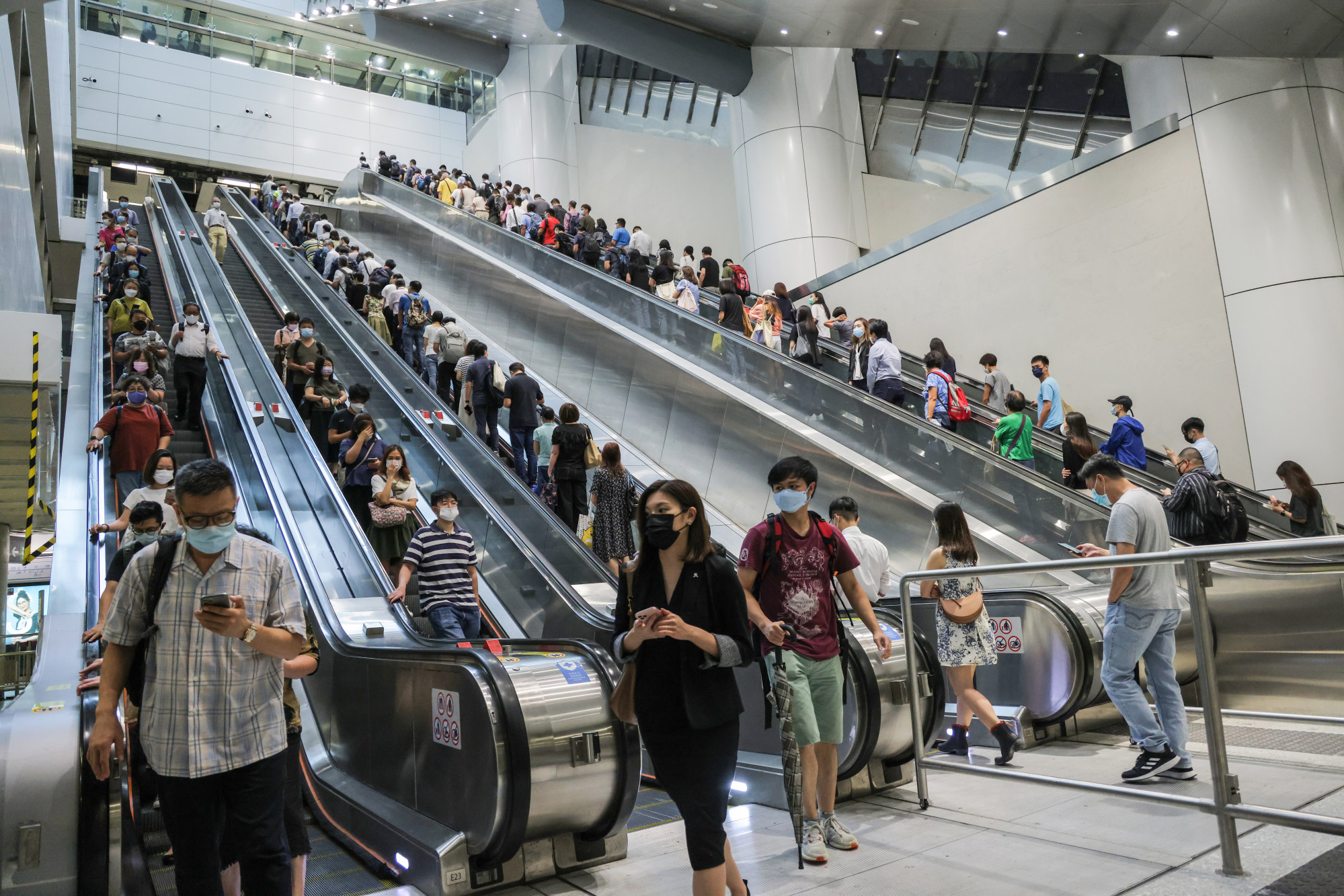
Hong Kong emerges from tropical storm Ma-on with little damage despite city maintaining No 8 typhoon signal for 14 hours
- Observatory says tropical storm moved further west than expected, sparing Hong Kong serious damage
- Social media users accuse weather forecaster of ‘untimely’ downgrading of No 8 signal, with some residents hoping for extra time off
Hong Kong has escaped the passage of Severe Tropical Storm Ma-on relatively unscathed, despite the city’s weather forecaster maintaining a No 8 typhoon signal for 14 hours and issuing flood alerts for low-lying areas.
The Observatory on Thursday said the weather would remain cloudy and isolated, while squally thunderstorms were expected for Friday as rain bands linked to the storm were set to continue affecting Guangdong province’s coastal areas.
It added that temperatures were likely to range between 27 and 31 degrees Celsius (80.6 and 87.8 degrees Fahrenheit).

All tropical cyclone warnings for Ma-on, which means saddle in Cantonese, were dropped at 4.10pm on Thursday, with the storm weakening after it made landfall near the city of Maoming in southwestern Guangdong.
At 8pm, Ma-on was centred about 110km from Nanning and was moving toward the northern part of Vietnam at about 35km/h.
The Observatory issued the No 8 signal – the third highest in the city’s tropical cyclone warning system – at 7.25pm on Wednesday, before downgrading it to No 3 on Thursday morning.
The city’s forecaster said Ma-On had moved further west than initially expected.
Lee Shuk-ming, a senior scientific officer with the government body, noted the unexpected shift by the tropical storm had spared Hong Kong from serious damage.
“Ma-on was a little bit further away from Hong Kong. It was closest to Hong Kong at about 3am to 4am [on Thursday] when it skirted about 190km to the south-southwest of Hong Kong,” she said, adding the change in direction had also resulted in lower-than-expected tides.
By 4pm on Thursday, authorities said one person was injured during the storm, while 21 cases of fallen trees and a single instance of flooding were logged. No landslides were reported.

But some social media users accused the Observatory of downgrading the higher signal in an “untimely” manner, saying they had hoped for the morning off but were instead forced to contend with long queues for public transport during their commutes to work.
One user asked the Observatory if it was “really a big deal” to have delayed downgrading the signal for several hours, while another claimed the forecaster could only blame itself for the backlash.
In anticipation of the bad weather, the city’s stock exchange cancelled its pre-opening and morning trading sessions, but the later segment took place as usual.
Various government services, such as court hearings, were cancelled during the morning but resumed operations later in the day.
Local students and teachers also enjoyed a late start to the school day, with the Education Bureau suspending all morning and full-day classes. But primary and secondary pupils went back to campuses for lessons in the afternoon and evening.
The government’s Covid-19 home vaccination service was also cancelled, while inoculation centres and related hospital stations opened at 12.30pm. People with earlier bookings that were affected will be informed of a new appointment date and time by SMS notification.
Hong Kong Disneyland, Ocean Park and its water park, as well as the Hong Kong Wetland Park, all opened later in the day.

Many residents living across Hong Kong’s islands and coastal areas had been earlier told to prepare for rising water levels as the storm edged closer to the city.
At Tai O, a fishing village on Lantau Island, where residents were warned of possible flooding, the tide level reached three metres at around 8am on Thursday.
Tai O Rural Committee chairman Ho Siu-kei said low-lying areas experienced slight flooding from Wednesday night to Thursday morning.
“Residents are fine as we have taken precautionary measures,” he said. “Only a few elderly residents needed to move to temporary shelters.”
Tai O Heritage Hotel, a non-profit social enterprise, delivered hot meals to people staying in temporary shelters and to those in need at the fishing village.
“We have visited around 100 villagers living in the hotel’s vicinity, in particular those in stilt houses and elderly villagers living alone. We have distributed relief packs, which include essentials such as water, food, towels, torches and first aid kits,” a spokeswoman said.
At the residential housing estate of Heng Fa Chuen on Hong Kong Island, some teenagers were seen strolling along the esplanade on Thursday morning, watching still-turbulent waves splash onto the pavement.
Thanks to the installation of flood barriers earlier in the week by the estate’s property management, the area remained largely unaffected by the passage of Ma-on.
Some residents in the coastal village of Lei Yue Mun, located in eastern Kowloon, said they had experienced ankle-deep flooding during the storm, but had managed to reduce the damage to their properties by building sandbag dykes beforehand.
“[This] time, the waves were not very big and we also had sandbags to stop the water,” one villager said. “Many of us could have a good sleep.”


